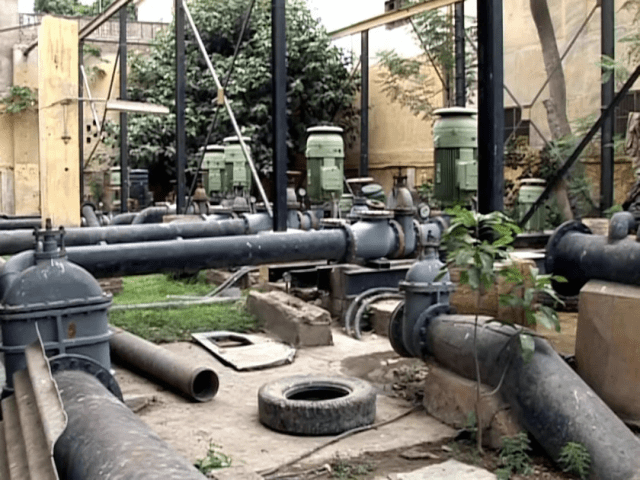Karachi’s water supply was seriously hit after a power outage caused an explosion at the Dhabeji pumping station, leading to the rupture of two major pipelines.
According to reports, a 72-inch diameter pipeline (No. 5) burst, disrupting water delivery to several areas of Karachi, Express News reported.
These include Landhi, Korangi, Shah Latif Town, Korangi, Town Ship, Gulshan-e-Iqbal, Gulshan-e-Hadeed and Malir, among others, which are now facing severe water shortages.
The Power Division took note of the incident and requested K-Electric to take immediate action to restore electricity supply to the pumping station.
A spokesperson for the Electricity Division said that water supply to Karachi must be restored at all costs, emphasizing the need for K-Electric to modernize the water supply system and avoid such incidents in the future.
On the other hand, a K-Electric spokesperson assured that power supply to all major pumping stations, including Dhabeji, was functioning normally.
The brief disruption at the pumping station has already been resolved and the K-Electric team is in communication with Water Board representatives to ensure smooth operations.
Additionally, delays in the B-Feeder canal lining work have raised fears of a looming water crisis in Karachi, while experts warn of further setbacks for the K-IV water supply project , already delayed.
According to Express News, the K-IV project, aimed at improving water supply to Karachi, involves a significant investment of Rs40 billion from the federal and Sindh governments. The plan is to increase the capacity of the Kalri Baghar distributor, which takes water from the Kotri dam.
The project is expected to be completed by 2027, covering a stretch of 36 kilometers and 190 outlets. However, work on the supply line was halted for 23 days, from December 20 to January 13, by the irrigation department, and progress was much slower than expected.
During this 23-day period, 45 outlets covering eight kilometers were to be completed, but only 25 outlets (five kilometers) were partially completed. This delay is worrying, especially since the World Bank had made it a condition that the capacity of the feeder be increased before financing for the K-IV project could be released.
Currently, the B-Feeder canal can discharge 7,600 cusecs of water, but once the project is completed, its capacity is expected to increase to 9,800 cusecs.
Following another demand from the World Bank, the irrigation department was tasked to complete the project by 2026, ahead of the original deadline of 2027, with the project director requesting additional funding of Rs 14 billion to speed up the work.
In response, the Sindh Chief Minister has written to the federal government to ensure timely funding, hoping that the required amount will be allocated within the next 15 days.
However, experts express dissatisfaction with the slow progress and fear that the project will not be completed on time.
Meanwhile, the appointment of the project director was challenged in the Sindh High Court, adding to the uncertainties surrounding the timely completion of the project.




